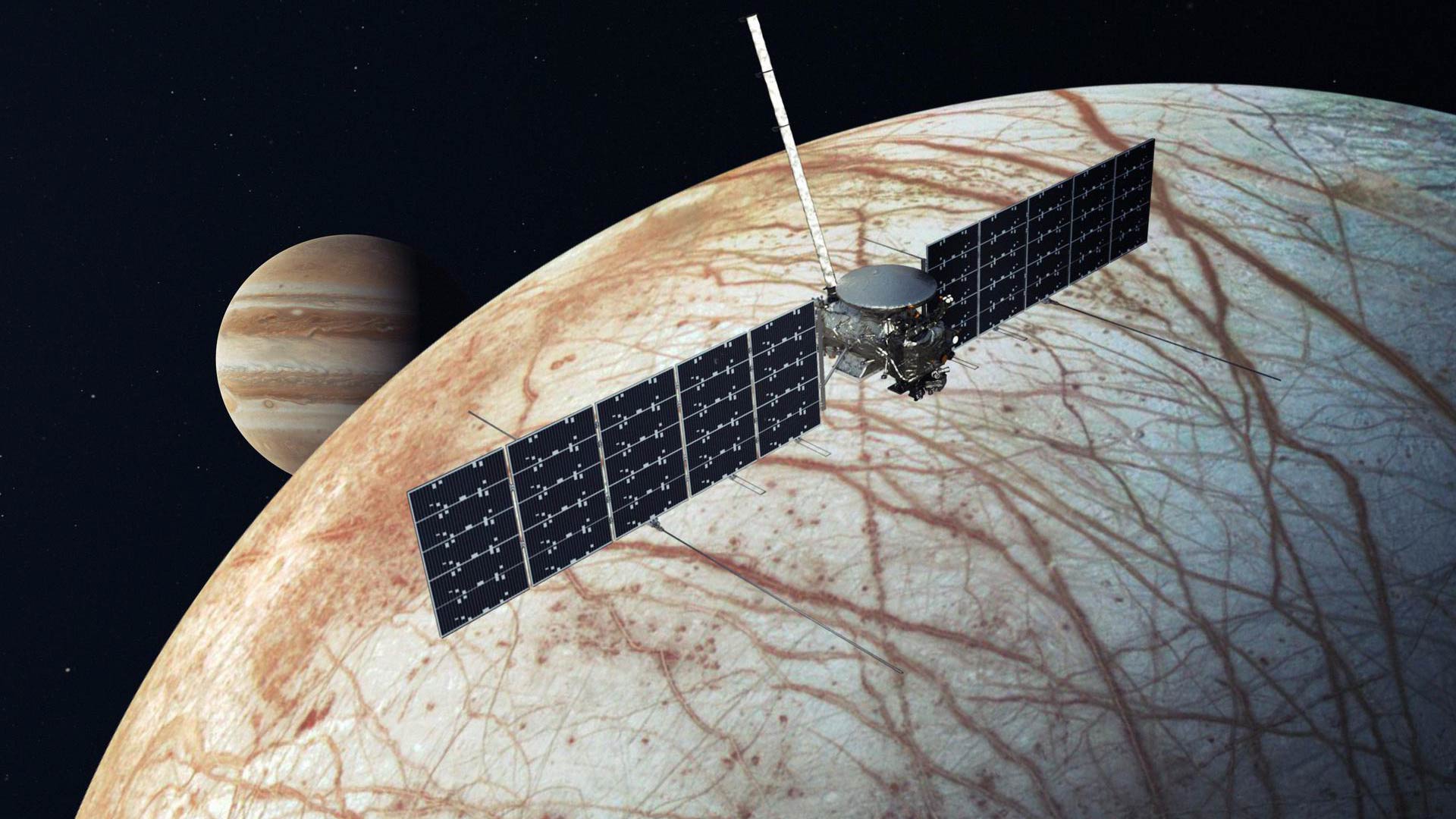Europa Clipper: What's next for NASA's biggest-ever interplanetary spacecraft?
NASA just launched a spacecraft the size of a basketball court towards Jupiter's moon Europa. Here's what will happen over the next 10 years.

NASA has successfully launched the Europa Clipper, the agency's biggest-ever interplanetary spacecraft, into space and it's now headed for Jupiter's frozen moon Europa.
"Congratulations to our Europa Clipper team for beginning the first journey to an ocean world beyond Earth," NASA Administrator Bill Nelson said in a statement.
The craft took off Oct. 14 on top of a SpaceX Falcon Heavy rocket from NASA's Kennedy Space Center in Florida. It was originally slated to launch Oct. 10, but the mission was pushed back because of Hurricane Milton, which smashed into Florida Oct. 9.
When the Europa Clipper arrives in 2030, the orbiter will study the frozen moon's hidden ocean, which is locked beneath an icy shell, to determine how habitable the ocean is and whether it could potentially support life.
Related: Jupiter's moon Europa lacks oxygen, making it less hospitable for sustaining life
How big is the Europa Clipper?
Once it spreads its solar arrays, the orbiter will measure around 100 feet (30 meters) wide — bigger than a basketball court. It is about 16 feet (5 m) high, according to NASA. The giant arrays are needed to collect solar energy to power the craft when it arrives at Europa, which is about 470 million miles (760 million kilometers) from the sun.
How long will it take the Europa Clipper to reach Jupiter?
The craft will take 5.5 years and travel 1.8 billion miles (2.9 billion km) to Jupiter's fourth-largest moon, according to NASA's Jet Propulsion Laboratory (JPL). It will swing close to Mars for a "gravity assist" in February 2025, before heading back to Earth to slingshot around our planet in December 2025 to make its way to Jupiter. It will reach the colossal planet and its moons in June 2030.
Get the world’s most fascinating discoveries delivered straight to your inbox.
Once there, the orbiter will perform flybys around several of Jupiter's moons, before making its first pass of Europa in spring 2031. In total, the craft will perform 49 flybys of Europa.
What is the purpose of Europa Clipper?
Europa Clipper's mission is to peer beneath Europa's frozen surface to look for key signs of habitable conditions. These are water, organics — essential chemical building blocks — chemical energy sources under the surface, and signs of stable conditions, according to NASA.
Scientists believe that Europa has a vast saltwater ocean that holds twice as much water as Earth's oceans — even though the moon is just one-quarter the size of our planet. Because of this water, scientists consider Europa one of the likeliest places in the solar system to find habitable conditions. Scientists still aren't sure how thick the icy shell is, so one of Europa's main scientific aims is to determine this and work out the composition of the ice and the vast ocean beneath it, according to NASA.
The findings could give scientists clues about where to spot potential life across the universe.
"By exploring the unknown, Europa Clipper will help us better understand whether there is the potential for life not just within our solar system, but among the billions of moons and planets beyond our Sun," Nelson noted.
However, Europa Clipper will not look directly for signs of alien life in the moon's ocean.
How much does Europa Clipper cost?
Europa Clipper cost about $3.8 billion to make and launch, and it will cost another $1.2 billion to operate until it completes its core mission in 2034, according to the Planetary Society. The spacecraft is carrying a collection of advanced equipment, which accounts for some of this cost. The nine instruments include an array of cameras to view the moon in visible light and infrared; a spectrometer and spectrograph to reveal Europa's composition; instruments to monitor gravity, magnetic fields and plasma; radar to peer beneath the surface; and instruments to perform chemical analysis.
The instruments are encased in a vault lined with aluminum and titanium to protect them from the extremely high levels of radiation around Jupiter, according to NASA. These radiation levels are the second-highest in the entire solar system — second only to the sun, according to JPL.
Will Europa clipper land on Europa?
The spacecraft will not land on Europa. Instead, it will stay in an elliptical orbit around Jupiter, which will help it survive the radiation levels that exist closer to Jupiter and Europa. At the end of its life, Europa Clipper will likely "deorbit," meaning deliberately crash, into the surface of Ganymede — Jupiter's and the solar system's largest moon.

James is Live Science’s production editor and is based near London in the U.K. Before joining Live Science, he worked on a number of magazines, including How It Works, History of War and Digital Photographer. He also previously worked in Madrid, Spain, helping to create history and science textbooks and learning resources for schools. He has a bachelor’s degree in English and History from Coventry University.


